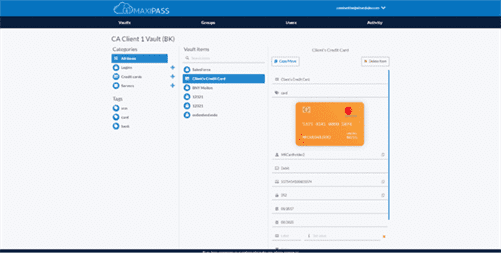Given that the shop is not operating yet, only a simulation model can provide us with insights. The first project compared the performance of simulators modeling the injection of gas into a saturated black oil reservoir. A saturated, light oil (59o API) is produced from a corner gridblock in the lowermost layer of a three-layer square grid. The injected gas is expected to propagate most rapidly through the upper layer. The first comparative solution project (Odeh, 1981) showed that differences in the formulations of several reservoir simulators lead to differences in predictions of economically important quantities such as oil production rate.

The simulations are built from a series of mathematical algorithms, or models, and can vary with accuracy. Accuscore, which is licensed by companies such as ESPN, is a well-known simulation program for all major sports. It offers a detailed analysis of games through simulated betting lines, projected point totals and overall probabilities.
Meaning of simulator in English
There are many different types of computer simulation, the common feature they all share is the attempt to generate a sample of representative scenarios for a model in which a complete enumeration of all possible states would be prohibitive or impossible. Procedures and protocols for model verification and validation are an ongoing field of academic study, refinement, research and development in simulations technology or practice, particularly in the work of computer simulation. Suppose we decided to open a donut shop and are unsure about how many employees to hire to sell donuts to costumers. The operations of our little shop is the real-world system whose behavior we want to understand.

Computer simulations allow their users to take models which before were too complex to run, and give them answers. Simulations have proven to be some of the best insights into both play performance and team predictability. With the increased interest in fantasy sports simulation models that predict individual player performance have gained popularity. Companies like What If Sports and StatFox specialize in not only using their simulations for predicting game results but how well individual players will do as well. A biomechanics simulator is a simulation platform for creating dynamic mechanical models built from combinations of rigid and deformable bodies, joints, constraints, and various force actuators. It is specialized for creating biomechanical models of human anatomical structures, with the intention to study their function and eventually assist in the design and planning of medical treatment.
simulator
Military simulations, also known informally as war games, are models in which theories of warfare can be tested and refined without the need for actual hostilities. In other simulations, visual components of the procedure are reproduced by computer graphics techniques, while touch-based components are reproduced by haptic feedback devices combined with physical simulation routines computed in response to the user’s actions. Medical simulations of this sort will often use 3D CT or MRI scans of patient data to enhance realism. Some medical simulations are developed to be widely distributed (such as web-enabled simulations[36] and procedural simulations[37] that can be viewed via standard web browsers) and can be interacted with using standard computer interfaces, such as the keyboard and mouse. Normally, a user can create some sort of construction within the microworld that will behave in a way consistent with the concepts being modeled. Seymour Papert was one of the first to advocate the value of microworlds, and the Logo programming environment developed by Papert is one of the most well-known microworlds.
What’s more, VR simulators can provide detailed feedback (“augmented feedback”), including success and performance metrics, as well as other educational data and aids. Such games can simulate various aspects of reality, from business, to government, to construction, to piloting vehicles (see above). Simulation of production systems is used mainly to examine the effect of improvements or investments in a production system. Most often this is done using what is simulator a static spreadsheet with process times and transportation times. For more sophisticated simulations Discrete Event Simulation (DES) is used with the advantages to simulate dynamics in the production system. A production system is very much dynamic depending on variations in manufacturing processes, assembly times, machine set-ups, breaks, breakdowns and small stoppages.[105] There is much software commonly used for discrete event simulation.
Among the main users are central banks who are generally responsible for the oversight of market infrastructure and entitled to contribute to the smooth functioning of the payment systems. Simulators like these are mostly used within maritime colleges, training institutions, and navies. They often consist of a replication of a ships’ bridge, with the operating console(s), and a number of screens on which the virtual surroundings are projected. In 1993, the film Jurassic Park became the first popular film to use computer-generated graphics extensively, integrating the simulated dinosaurs almost seamlessly into live action scenes.
- This will allow students to enter the clinical years better prepared, and with a higher skill level.
- The situations when simulators should not be used or must be modified from the defaults will be discussed in detail.
- Simulation of fluid dynamics problems often require both mathematical and physical simulations.
- Flach (1999) observed that students often resort to simulators when they are not needed and further observed the tendency of students not to evaluate critically the results of simulations.
- Finally, since VR simulators for RAS are expensive, it would be essential to assess their cost-effectiveness, as done for flight simulators, to justify their purchase [8].
In such situations, they will spend time learning valuable lessons in a “safe” virtual environment yet living a lifelike experience (or at least it is the goal). Often the convenience is to permit mistakes during training for a safety-critical system. APROS facility has been developed by Fortum power division in Finland in cooperation with VTT technical research center in 1986.
CADE[75] has used a video game to prepare emergency workers for multiple types of attacks. More recently, interactive models have been developed that respond to actions taken by a student or physician.[50] Until recently, these simulations were two dimensional computer programs that acted more like a textbook than a patient. Computer simulations have the advantage of allowing a student to make judgments, and also to make errors. The process of iterative learning through assessment, evaluation, decision making, and error correction creates a much stronger learning environment than passive instruction.
They are also important to help on prototyping new devices[32] for biomedical engineering problems. Currently, simulators are applied to research and develop tools for new therapies,[33] treatments[34] and early diagnosis[35] in medicine. Traditionally, the formal modeling of systems has been via a mathematical model, which attempts to find analytical solutions enabling the prediction of the behaviour of the system from a set of parameters and initial conditions. Computer simulation is often used as an adjunct to, or substitution for, modeling systems for which simple closed form analytic solutions are not possible.
